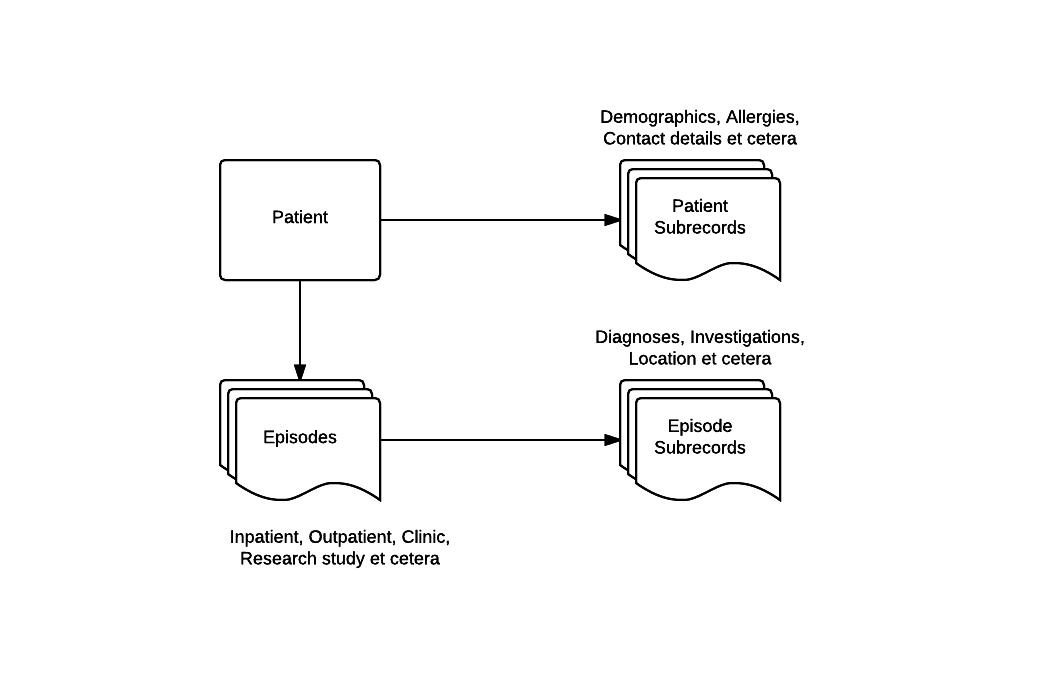The OPAL Data model
The OPAL data model allows for patients to have multiple sequential or concurrent
Episodes of care. Some information is linked to an Episode, some is linked to
a Patient.

Location and TrackedModel abstract models
Location provides all the fields you might need to location a specific bed in a hospital i.e. category, hospital, ward, bed
TrackedModel provides some basic audit fields created_by, created, updated_by, updated the presumption is that these will be set by the update_to_dict model or manually in your view this is so backend modification can happen without having to worry about corrupting the audit trail.
Patients
A Patient may have many Episodes. An Episode is something like an Inpatient admission,
a Telephone Liaison, care under an outpatient clinic, an appointment at a drop in clinic.
Applications or plugins may define their own Episode types, and a common pattern is to
alter the display or available functionality by episode type. (e.g. You may associate
templates for discharge summaries with particular episode types)
A Patient will have Subrecords (such as e.g. Demographics) which follow them across multiple
episodes. These are information linked to a particular person, and should be implemented as
Django models that inherit from the opal.models.PatientSubrecord base class.
Episodes
An Episode is linked to a Patient, and will contain some metadata about the type and date
of the episode. The field Episode.category stores the type of episode ('Inpatient', 'Outpatient', ...)
while the fields Episode.date_of_admission, Episode.discharge_date, and Episode.date_of_episode
store information about when the Episode occurrs.
An Episode will have Subrecords (such as e.g. Diagnosis) which are linked to this episode of
care. These should be implemented as Django models that inherit from the opal.models.EpisodeSubRecord
base class.
Records
A Subrecord consists of a collection of fields that constitute a record. For example, one could
implement a Demograpics Subrecord as follows:
class Demographics(PatientSubrecord):
name = models.CharField(max_length=255, blank=True)
hospital_number = models.CharField(max_length=255, blank=True)
nhs_number = models.CharField(max_length=255, blank=True,
null=True)
date_of_birth = models.DateField(null=True, blank=True)
ethnicity = models.CharField(max_length=255, blank=True,
null=True)
gender = models.CharField(max_length=255, blank=True,
null=True)
Subrecords also define various properties that will provide metadata about their display or structure, which are documented in the Subrecord reference material
Lookup Lists
OPAL comes with a set of clinical terminology data models out of the box. - we often want to link our records to one of these - for example to record a type of condition a patient might have, or a drug they are taking.
Full documentation of these is available in the Lookup lists documentation.